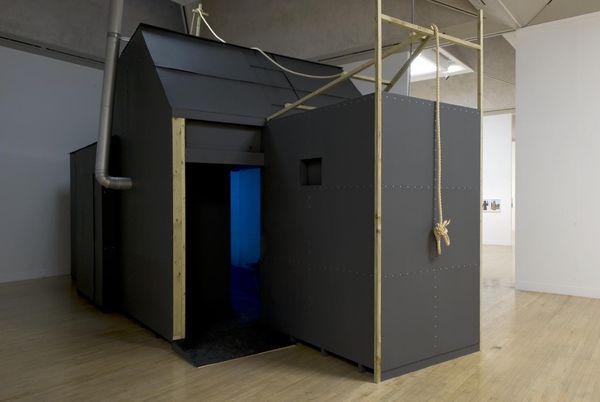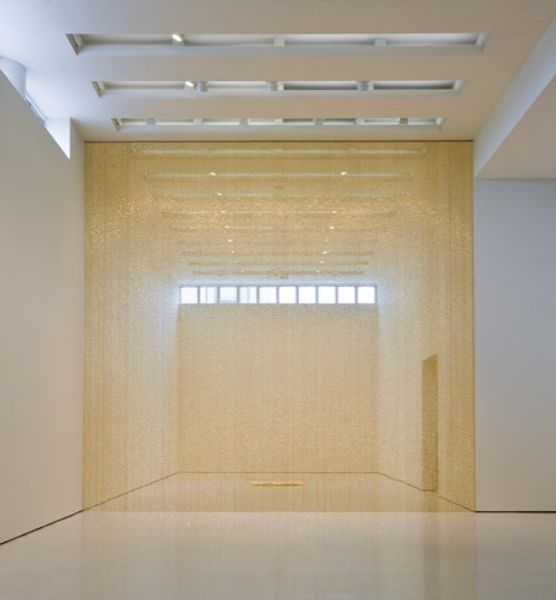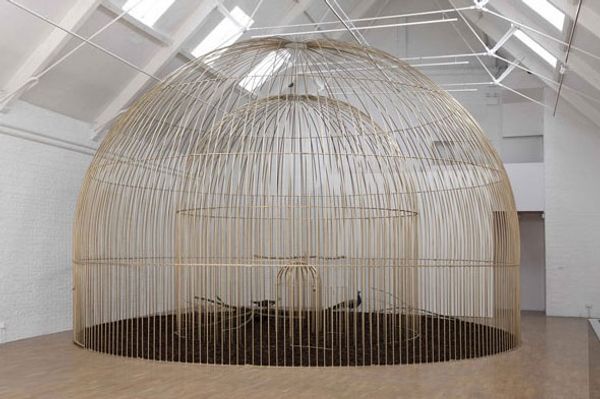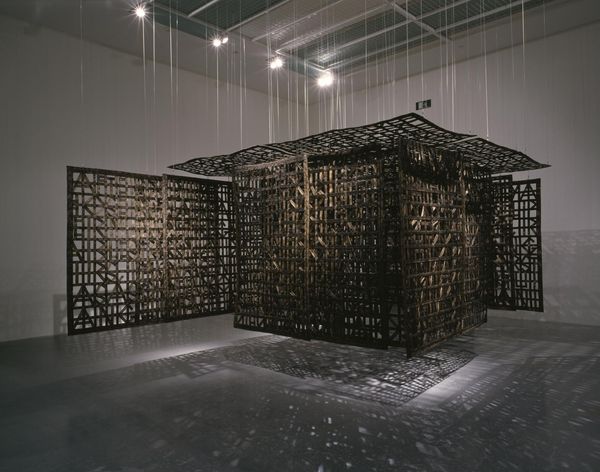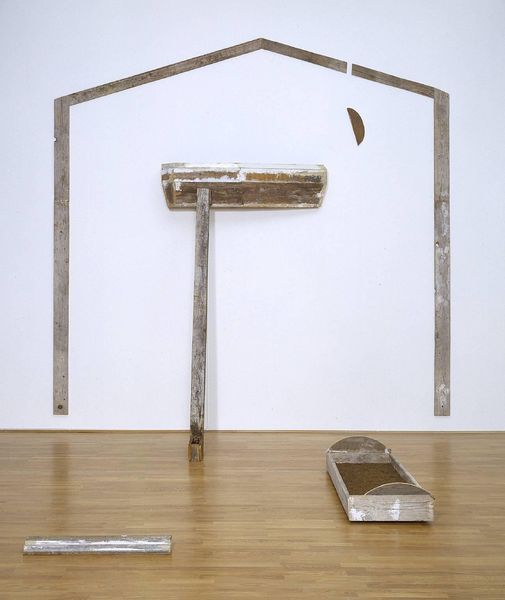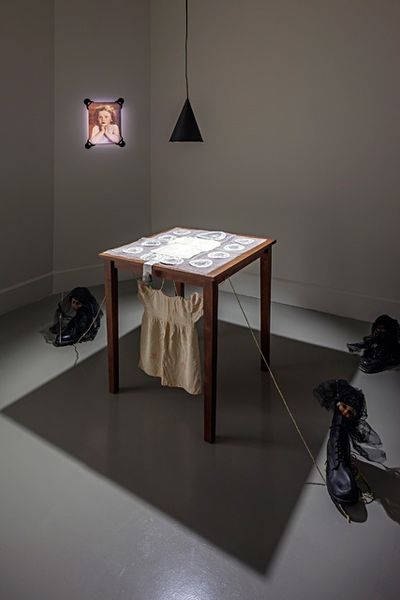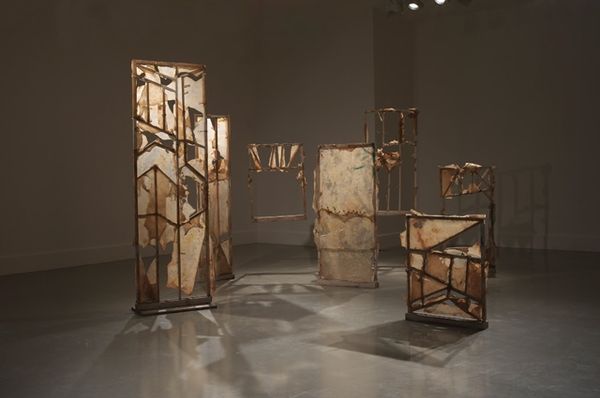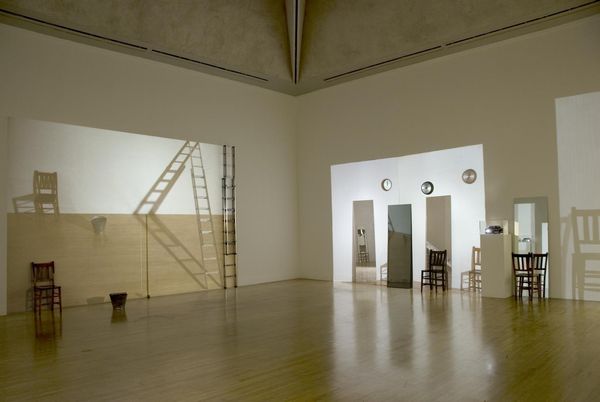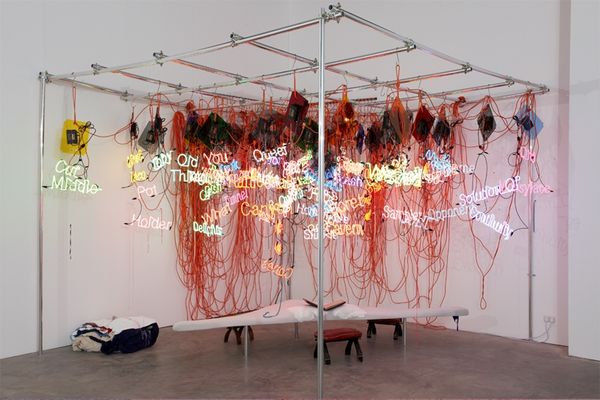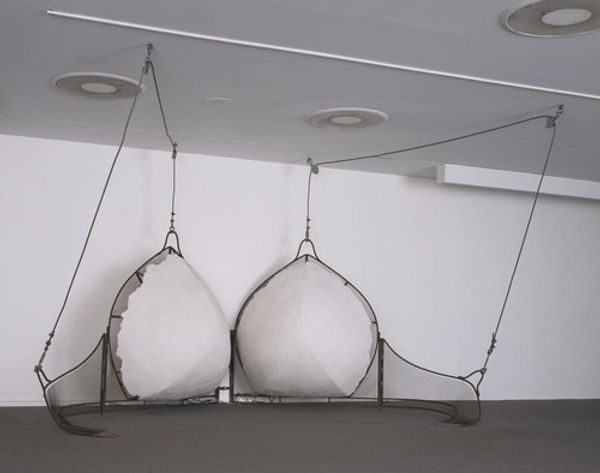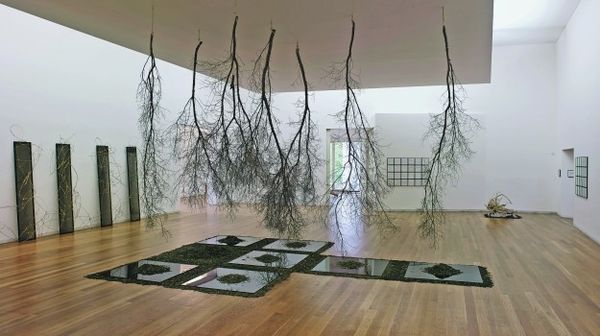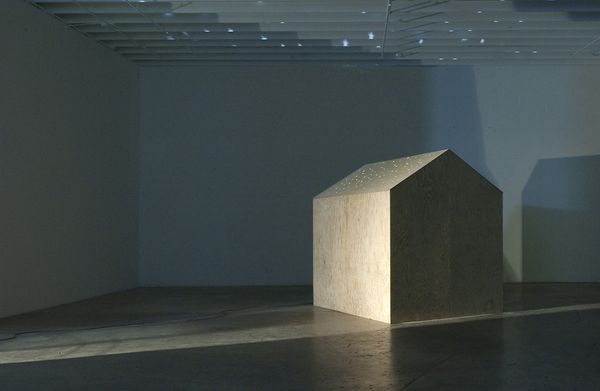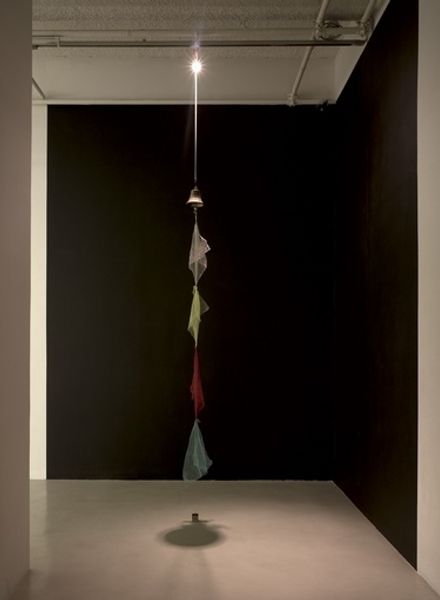
Eureka/Blindhotland 1970 - 1975
Dimensions: display dimensions variable
Copyright: © Cildo Meireles | CC-BY-NC-ND 4.0 DEED, Photo: Tate
Comments
tate 6 months ago
⋮
http://www.tate.org.uk/art/artworks/meireles-eurekablindhotland-t12605
Join the conversation
Join millions of artists and users on Artera today and experience the ultimate creative platform.
tate 6 months ago
⋮
Eureka/Blindhotland is an installation in a darkened room. In the centre, a spotlight falls dramatically on a large set of scales, raised on a pole. The scales sit in equilibrium, holding in one dish a pair of identical rectangular wooden blocks standing upright in parallel so that they resemble an ‘=’ symbol turned on its end; in the other dish, a pair of the same blocks form an ‘x’ or multiplication symbol. On the floor below, two hundred black rubber balls of the same size are scattered randomly within the confines of a tall net enclosure which defines a square around the central pole. The balls lie on a section of rubber matting the same colour as the pole supporting the scales. Although the balls are identical in appearance, they range in weight between 150 and 1,500 grammes. These physical components form the second part of the work; Eureka referring to the scales and wooden bars, and Blindhotland to the rubber balls. An alternative method of display is to stand the wooden blocks on the floor and balance the accumulated weights of three rubber balls with that of a fourth in the scales. The project’s third component, titled Expeso, is a sound recording that plays in the space. It is a tape-recorded documentation of one hundred balls being dropped from heights in combinations of fixed and variable components: the weights of the balls, the heights from which they are dropped and the distance they are dropped from the microphone. The first part of the project is external to the displayed installation. It involves inserting two basic elements – black and white photographs of a homeless man and of a ball – in between four and eight newspapers on one day during the period of the work’s exhibition. There are eight variations on the way in which the two photographs, in two sizes, may be exhibited, combining size and order. These are described as XY, Xy, xY, xy, YX, yX, Yx, yx.
